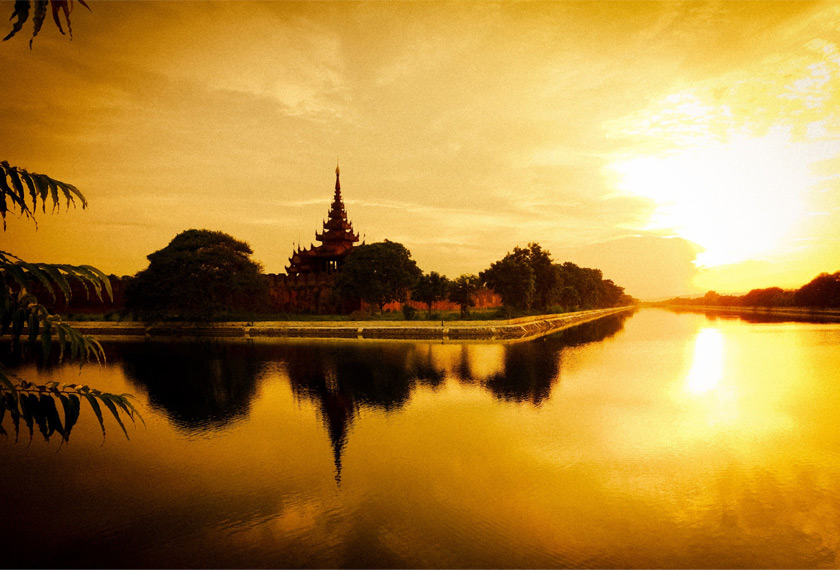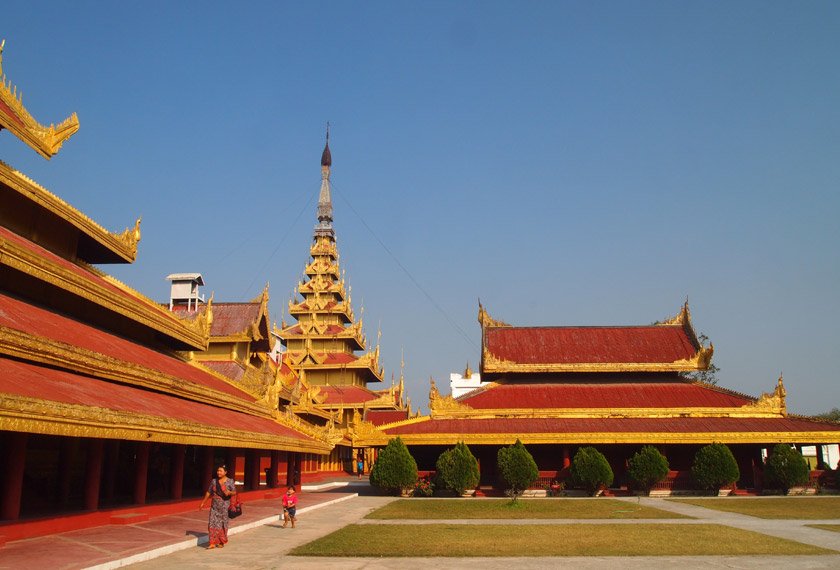King Mindon Min ordered the construction of this imposing walled palace come fortress in 1857. The palace forms a perfect square, with a flowing moat. The outer walls face the four cardinal directions and the 12 gates thereon are named after the signs of the Zodiac. Sadly it was severely damaged in 1945 during fierce fighting between the British, Indian and Japanese forces. Formerly made to teak it has been reconstructed using concrete. Views differ as to how visitors receive the renovations, personally I found the visit worthwhile as the restorations were fine, although obviously missing the romance that teak can only provide the buildings gave a sense of scale from a kingdom that aspired to construct massive symbolic buildings.
Mandalay
Mandalay, Golden City was founded relatively recently in 1857 by King Mindon to coincide with an ancient Buddhist prophecy. Tradition has it that Gautama Buddha visited the sacred Mandalay Hill site, and proclaimed that on the 2400th anniversary of his death a metropolis of Buddhist teaching would be founded there. Upon completion of what was now the new Royal capital of Konboung, or Upper Myanmar, King Mindon moved his entire government and 150,000 people from nearby Amarapura. It was common in Burmese history to move capitals upon the ascension of a king. It was the last city to fall into the hands of the British invasion of 1885; and for this reason it still has great importance as a cultural centre. King Thibaw was reigning at the time, but after he handed Mandalay over to the British General Prendergast, both he and his queen went into self imposed exile.


